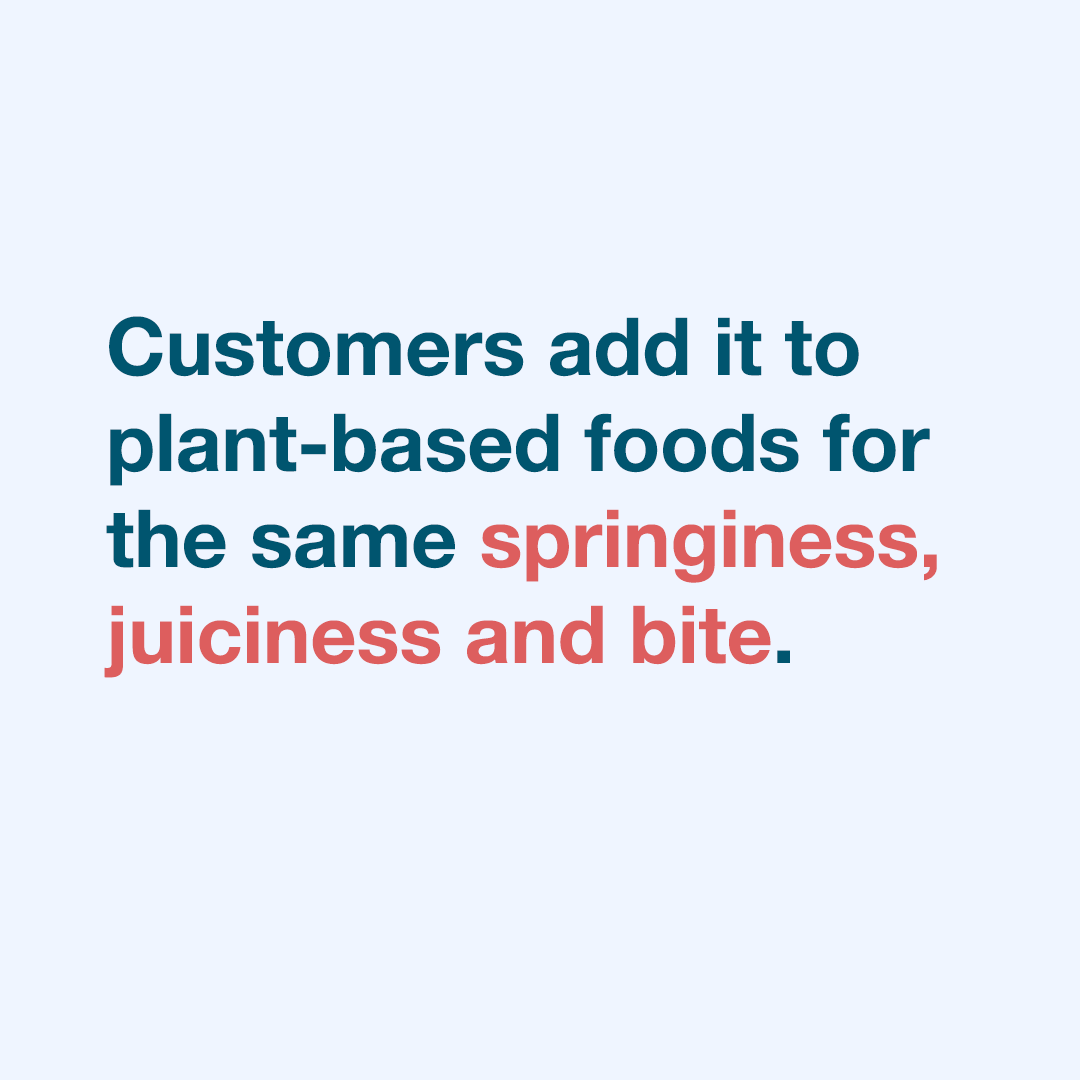From crunchy first bites to silky smooth sips that delight our taste buds, texture is a big part of why we enjoy eating. Texture can turn a simple sustenance into an exquisite sensory experience and enhance the flavor of food. That said, texture is a very individual experience; what pleases the palate is a unique mix of preferences that can vary greatly by person.
That means we have to use our scientific lenses to uncover what makes texture “better” when it comes to improving plant-based meat. That “better” texture all depends on what you are trying to recreate, whether it’s the tenderness of chicken, the flakiness of a fish, or the springiness and chew of a burger patty. There’s a spectrum of texture attributes, which are even more nuanced when it comes to plant-based meat. The question is, can the experience of texture be measured? And how do we design unique combinations that improve food experiences for everyone? At Motif, we believe we’re doing just that for plant-based foods through our innovative plant-based technology: APPETEX™.
Why texture matters
To unleash the promise of plant-based foods, we turn to those who know the products best: consumers. Taste and texture are two major complaints raised consistently by consumers of plant-based meat, with two in three Americans (67%) saying that they would eat more plant-based products if they tasted better. In Motif’s own research with focus groups, people described their experience with plant-based burgers as finding the texture lacking. They find them “dry” and “lacking moisture,” as well as being “mushy” in having a uniform texture that does not come anywhere close to the experience of eating a typical beef patty.
“When you bite into a beef patty, it is moderately hard with springiness in the first bite, and it forms large non-uniform particles in the mouth during chewing. In contrast, plant-based products don’t have that hardness or springiness with the first bite, but they do have a uniform texture in what we call the “chewdown” experience,” says Dr. Dilek Uzunalioglu, Motif’s head of food applications.

Meat has a highly unique texture due to its complex structure. That springy feel when chewing comes down to a combination of proteins that comprise muscle and connective tissues in meat, along with elements of cartilage and even bone. While plant-based proteins like texturized soy or pea protein can mimic the fibrous structure of meat, these substances literally fall flat when it comes to the springy chewdown sensation of meat.
Innovating outside the box
Armed with this knowledge, Dr. Uzunalioglu and Dr. Stefan Baier, Motif’s head of food science, engaged an outside network of innovators and multidisciplinary experts across diverse fields like physics and aerodynamics to biotech and materials science to come up with a viable solution to our tricky texture troubles.

This team of scientists were integral to Motif’s development of APPETEX™, an edible plant-based hydrogel capable of replicating the springiness, juiciness and bite associated with animal-based connective tissue using plant-based proteins and carbohydrates.
“All of the materials that we use are already traditionally used in food formulations, but the way we combine them and process them gives a very unique material feel. That’s driven by how APPETEX™ swells when it hydrates and becomes harder in contrast to the plant-based protein in the food,” explained Dr. Baier.
In contrast to the softer ingredients in plant-based meat, APPETEX™ provides a springiness and resistance similar to what we experience biting into traditional meat products.
Recipe for success
Development of this technology was just the first step. The biggest challenge lay in coming up with the right formulation to test it in—a task made more challenging by the pandemic and office and lab closures. At the start of the pandemic, Dr. Uzunalioglu recalls turning her kitchen into a food science lab and using a high-quality mixer and scale to test out the early formulations and methods for adding APPETEX™ into plant-based meat.
“The first APPETEX™ sample I received was also my first at-home kitchen sample! We had to do a lot of baseline formulation to get the size and composition of APPETEX™ just right,” says Dr. Uzunalioglu.
APPETEX™ is produced in the form of small, dried pellets which expand when hydrated. Dr. Uzunalioglu believes this is another major benefit of the technology, that it can be easily incorporated into existing methods of plant-based meat formulation.
“Selling the dry material and incorporating it into a commercial partner’s current process makes perfect sense from the perspective of shelf life and the logistics of preparing the final product,” says Dr. Uzunalioglu, whose team helps food developers formulate their foods with the optimal balance of this texture technology.
The results from consumers taste testing APPETEX™ in a showcase burger were overwhelmingly positive in Motif’s focus groups. “It tastes so much like meat: the juiciness, the texture, the color,” said one satisfied consumer. “The texture is almost identical to a hamburger!” declared another, echoing what many of the pleasantly surprised consumers had to say, along with many comments about how “it’s not just one uniform texture.”
Now that the spring has sprung
Motif’s mission is to bridge the gap between expectation and reality for plant-based foods, and APPETEX™ will go a long way in adding the depth and complexity that’s currently missing from plant-based meat substitutes. We’re here to not only address primary gaps in plant-based foods, but to make them more nutritious and taste so good that you crave them.
This blog on the science behind APPETEX™ is a part of Motif’s ongoing efforts to combine detailed consumer feedback with input from world-leading academic, culinary and innovation partners that understand the taste experience and know how to best unlock the promise of plant-based foods.
